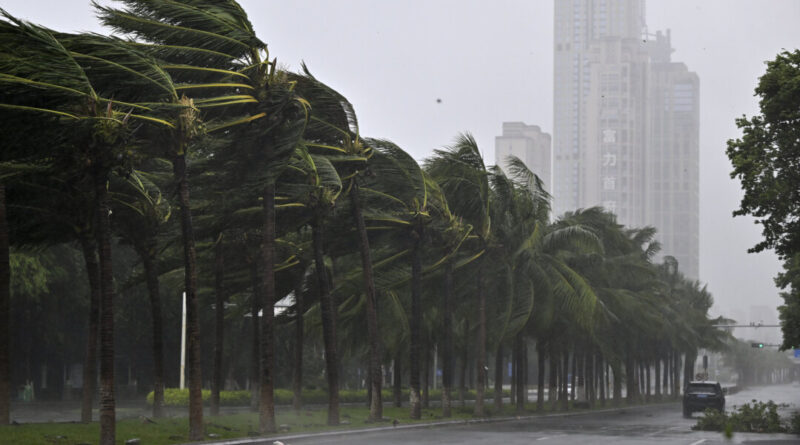According to Vietnamese Officials, Typhoon Yagi Causes 4 Fatalities and 78 Injuries Upon Hitting Land
HANOI, Vietnam—Vietnamese authorities report that Typhoon Yagi has resulted in the deaths of at least four individuals and injured 78 others after hitting the northern region of the country on Saturday afternoon.
Yagi, characterized by Vietnamese meteorologists as “one of the most potent typhoons in the region in the last decade,” moved into Southeast Asia following its impact in the Chinese province of Hainan where it caused three fatalities and almost a hundred injuries.
The typhoon made landfall in Vietnam’s coastal provinces of Quang Ninh and Haiphong with wind speeds reaching up to 149 kilometers per hour (92 miles per hour), as reported by state media. Prior to its arrival, strong winds took the life of a woman in the capital city of Hanoi by toppling a tree, as per local media reports on Saturday.
Quang Ninh is where the UNESCO World Heritage site Ha Long Bay is located, renowned for its numerous towering limestone islands. Ahead of the typhoon’s arrival, numerous cruises at the popular site were canceled, according to local media. Haiphong, noted for being an industrial hub housing major factories like EV manufacturer VinFast and Apple supplier Pegatron, was also impacted.
The typhoon led to power outages in significant portions of Quang Ninh and Thai Binh provinces as well.
Prior to the event, authorities issued various alerts and evacuated those susceptible to floods or landslides. Four airports, including in Hanoi and Haiphong, were closed.
Authorities trimmed trees in Hanoi to reduce the risk of falling but gusty winds and rain caused multiple trees and billboards to topple in northern cities. Local media also reported numerous boats being swept out to sea.
“I plan to stay indoors and keep my family safe,” mentioned 24-year-old businesswoman Bao Ngoc Cao from Hanoi. She recalled the last powerful typhoon hitting Vietnam in 2013 and noted that storms usually weaken before reaching the capital. However, she emphasized the importance of remaining prepared.
On Friday afternoon, Yagi made landfall in Wenchang, China’s Hainan province, with wind speeds reaching roughly 245 kph (152 mph) near its center. Authorities in the province confirmed three deaths and nearly a hundred injuries caused by the typhoon. Over 1.2 million individuals were affected by noon on Saturday, per reports from the local newspaper, Global Times.
About 420,000 residents of Hainan were relocated prior to the typhoon’s arrival. Additionally, half a million people in Guangdong province were evacuated before Yagi’s second landfall in Xuwen County on Friday night.
While the meteorological observatory in Haikou downgraded its typhoon alert from red to orange as the typhoon moved away on Saturday, Yagi had already departed from Hong Kong after leading to more than 270 individuals seeking shelter at temporary government facilities on Friday. The city also experienced over 100 canceled flights due to the typhoon, with heavy rain and strong winds causing tree falls and halting stock market trading, banking services, and schooling.
Upon exiting the northwestern Philippines and entering the South China Sea on Wednesday, Yagi, still classified as a storm, resulted in at least 20 fatalities and 26 people going missing, primarily due to landslides and widespread flooding. This affected over 2.3 million people in various northern and central provinces.
More than 82,200 individuals were displaced from their homes in Philippine provinces, leading to disruptions in classes, work, inter-island ferry services, and domestic flights for several days in metro Manila and surrounding regions.
Benjamin Horton, director of the Earth Observatory of Singapore, emphasized that storms like typhoon Yagi are intensifying due to climate change, with warmer ocean temperatures providing increased energy to fuel storms, resulting in higher wind speeds and heavier rainfall.
He further noted that climate change is causing storms to potentially shift to different areas, with studies demonstrating changes in storm intensity latitudes. He stressed the importance of protecting natural systems and enhancing infrastructure resilience to tackle strong typhoons effectively.
By Zen Soo and Aniruddha Ghosal





